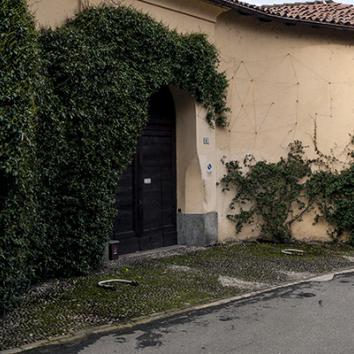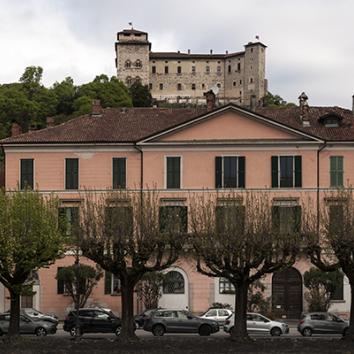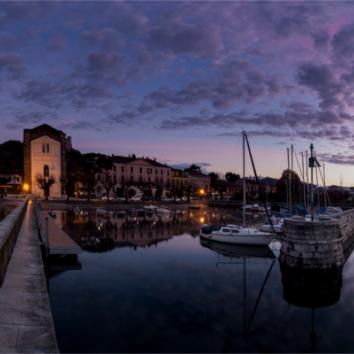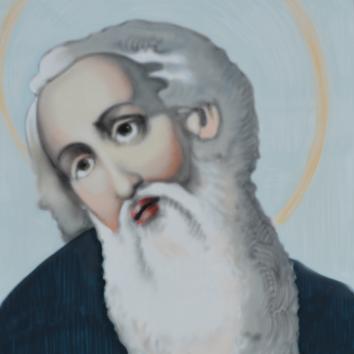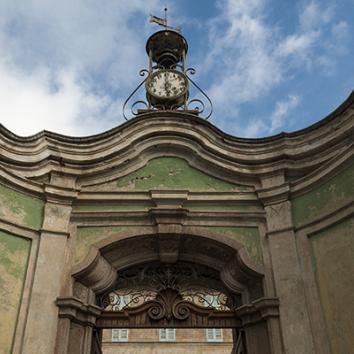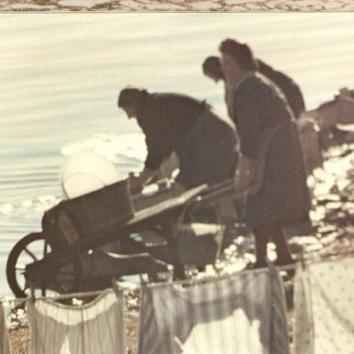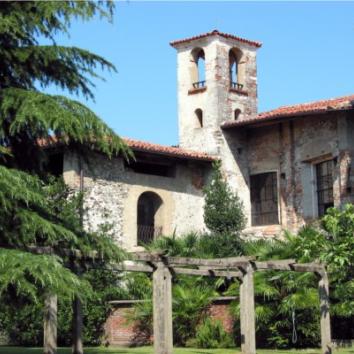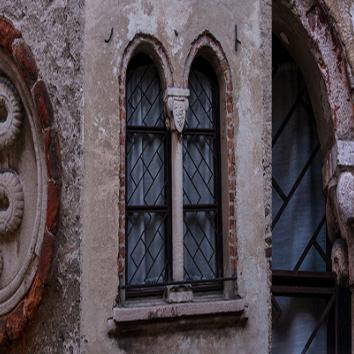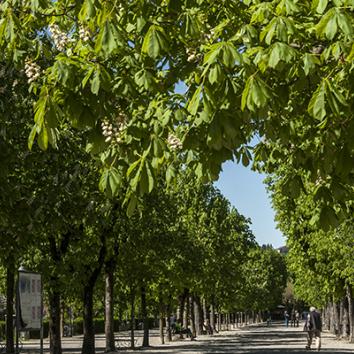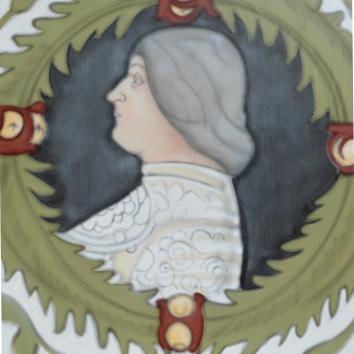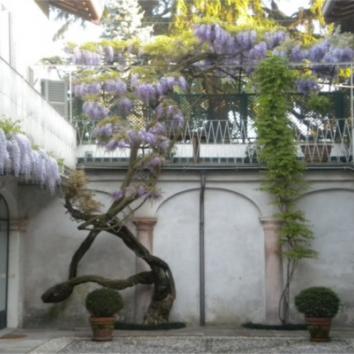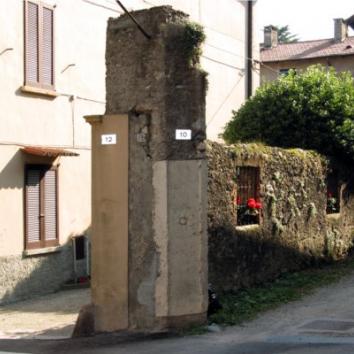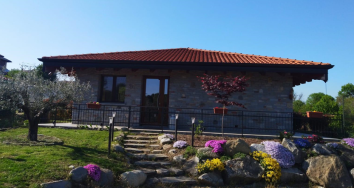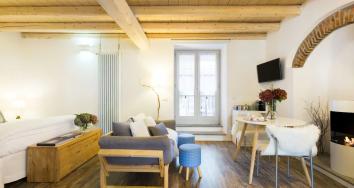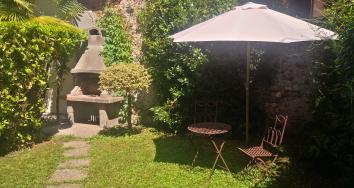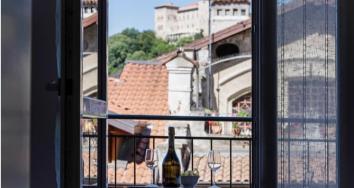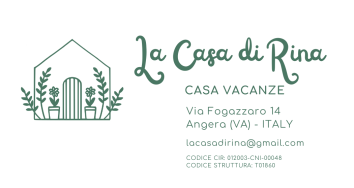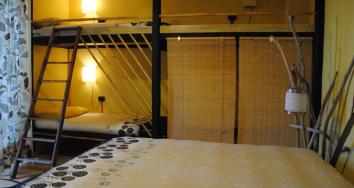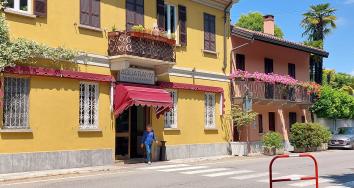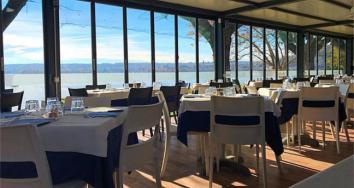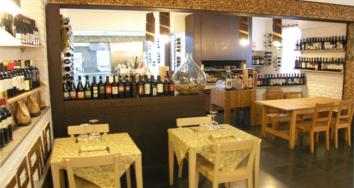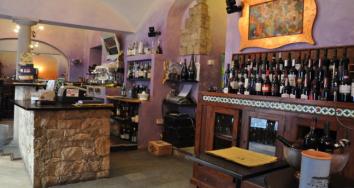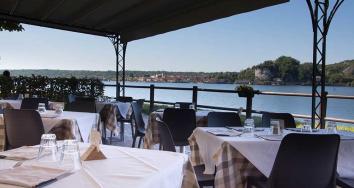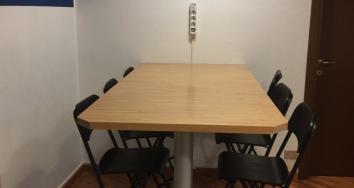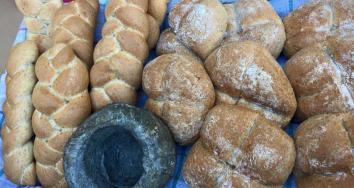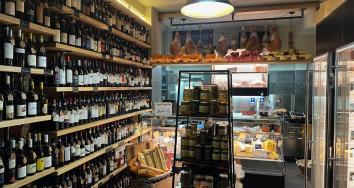Sanctuary of Madonna dei Miracoli or the Shore
17th-20th century
“In 1657 on the 27th June occurred the miracle of sweating blood, which appeared on the forehead of the Blessed Virgin that stood above the side wall of the door of Casa Berna. So, as is their custom, the women of Angera had made a garland of flowers for this effigy. And a woman who, passing in front of it, knelt to say a Hail Mary before the Divine Image, saw that blood came from its face again and again. The frightened woman cried out that it was a miracle. The provost Signor Giorgio Castiglioni intervened, drying the miraculous blood with a white linen cloth” (from the Register of Baptisms, Deaths, Weddings and Confirmations 1678-1704, annotated by the provost Aicardo and his assistant Gatto).
In memory of the miracle of the Madonna who sweated blood and the martyrdom of Sant'Arialdo, every year on the 27th June a service is held, with a procession of boats from the Sanctuary to Isolino Partegora (Panel 19) and back.
To celebrate the miraculous image, responsible for healing also in later times, the community decided to found a sanctuary.
The current building is part of a project commissioned by Giorgio Castiglioni, Priest of Angera, and Count Giovanni Borromeo, and entrusted to the architect Gerolamo Quadrio.
In 1667 only the chorus and presbytery had been completed, and due to lack of funds the church remained unfinished and out of proportion.
In 1735 a small bell-tower was built on the rear part of the roof.
The façade was rebuilt in 1943 with a wall designed by the architect Rino Ferrini of Angera, on which were marked the high-water levels of the lake on 4th November 1705 and 4th October 1868.
Inside, above the altar, is the miraculous fresco of the Madonna and Child; the painting dates to 1443 and was lifted from the original wall and transferred to canvas. The 1868 flood has partly reduced its visibility.
The miraculous image is framed by a well-made "Glory of Angels".
On the back of the altar there is a 15th century painting of the Crucifixion from the Church of Santa Maria Assunta.
The left side is dominated by a double canvas showing Saint Carlo visiting the valleys, by Isidoro Bianchi from Campione, which in the 1600s adorned the outside of the doors of the old organ in the parish church of the Virgin's Assumption; the inside was decorated with two paintings of the Ascension and the Assumption of Mary placed on the right, which are attributed to Bartolomeo Roverio known as Genovesino, who was active in this area in about 1620.
The Madonna with Child and Saints, an Adoration of the Magi and a Nativity are by unknown 17th century artists.
The stained-glass window above the entrance, made in 1957 by Prof. Bertuzzi of Milan, shows the Assumption of the Virgin and the landscape of Angera. The interior was refurbished in 1980-81 by architect Vincenti of Milan.






















